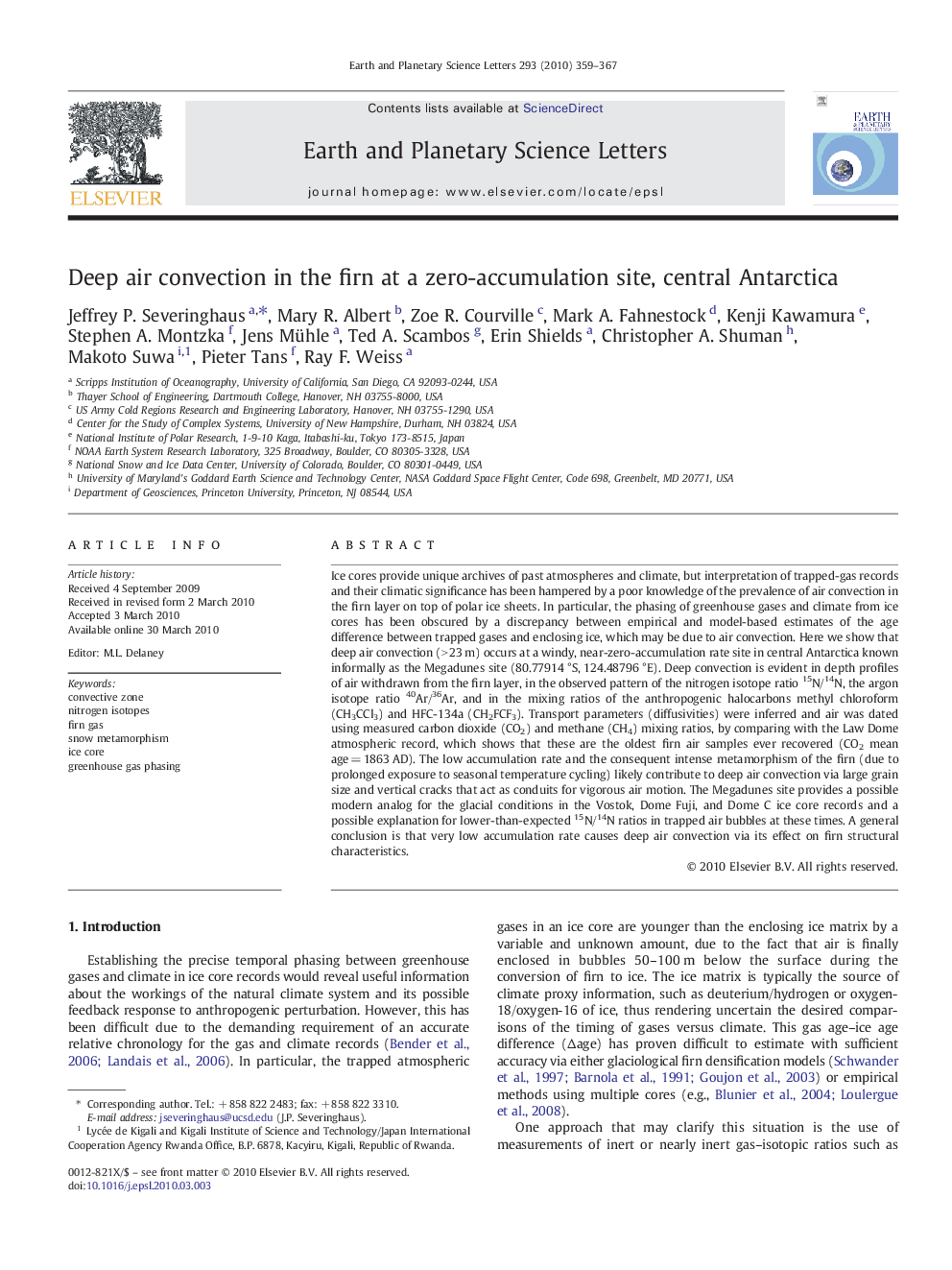| کد مقاله | کد نشریه | سال انتشار | مقاله انگلیسی | نسخه تمام متن |
|---|---|---|---|---|
| 6430996 | 1634853 | 2010 | 9 صفحه PDF | دانلود رایگان |

Ice cores provide unique archives of past atmospheres and climate, but interpretation of trapped-gas records and their climatic significance has been hampered by a poor knowledge of the prevalence of air convection in the firn layer on top of polar ice sheets. In particular, the phasing of greenhouse gases and climate from ice cores has been obscured by a discrepancy between empirical and model-based estimates of the age difference between trapped gases and enclosing ice, which may be due to air convection. Here we show that deep air convection (> 23 m) occurs at a windy, near-zero-accumulation rate site in central Antarctica known informally as the Megadunes site (80.77914 °S, 124.48796 °E). Deep convection is evident in depth profiles of air withdrawn from the firn layer, in the observed pattern of the nitrogen isotope ratio 15N/14N, the argon isotope ratio 40Ar/36Ar, and in the mixing ratios of the anthropogenic halocarbons methyl chloroform (CH3CCl3) and HFC-134a (CH2FCF3). Transport parameters (diffusivities) were inferred and air was dated using measured carbon dioxide (CO2) and methane (CH4) mixing ratios, by comparing with the Law Dome atmospheric record, which shows that these are the oldest firn air samples ever recovered (CO2 mean age = 1863 AD). The low accumulation rate and the consequent intense metamorphism of the firn (due to prolonged exposure to seasonal temperature cycling) likely contribute to deep air convection via large grain size and vertical cracks that act as conduits for vigorous air motion. The Megadunes site provides a possible modern analog for the glacial conditions in the Vostok, Dome Fuji, and Dome C ice core records and a possible explanation for lower-than-expected 15N/14N ratios in trapped air bubbles at these times. A general conclusion is that very low accumulation rate causes deep air convection via its effect on firn structural characteristics.
Journal: Earth and Planetary Science Letters - Volume 293, Issues 3â4, 1 May 2010, Pages 359-367